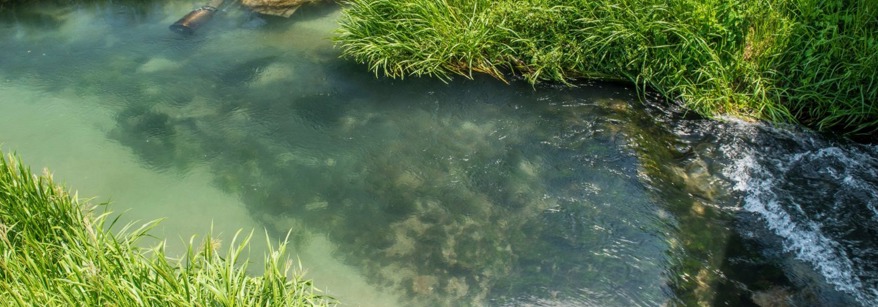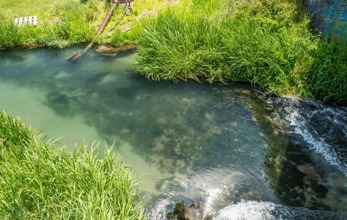Wetlands provide critical habitat to many of our native species but also improve water quality and help to control flooding. Despite this, New Zealand has lost 90% of its natural wetlands. New rules have been introduced to better protect the remaining wetlands and promote their restoration. From 3 September 2020, you will need to:
- Avoid clearing vegetation or undertaking earthworks within 10m of a natural wetland unless in limited circumstances;
- Avoid drainage or taking, damming, diverting or discharging water within 100m of a natural wetland unless in limited circumstances;
- You can do some work in a natural wetland for restoration, or scientific or cultural purposes if this complies with the general wetland conditions (below).
- In most cases, if you want to put in new structures (such as maimai or boardwalks), or make other changes that affect the drainage of a natural wetland, you will need to get a resource consent from BOPRC.
- Vegetation clearance, land disturbance and earthworks can be undertaken within 10m of a natural wetland if for the purpose of arable or horticultural land use and the land was used for that purpose during the period 1 January 2010 and 2 September 2020 (conditions apply);
- Report information to BOPRC if you undertake a permitted activity (except arable and horticultural land uses) under the NES-Freshwater natural wetland rules.
General wetland conditions
(1) This regulation applies if a regulation in this subpart refers to the compliance of an activity with the general conditions in this regulation.
General condition for permitted activities: prior notice of activity
(2) If this regulation applies in relation to a permitted activity, the 1 or more persons responsible for undertaking the activity must, at least 10 working days before starting the activity, provide the relevant regional council with the following information in writing:
- a description of the activity to be undertaken; and
- a description of, and map showing, where the activity will be undertaken; and
- a statement of when the activity will start and when it is expected to end; and
- a description of the extent of the activity; and
- their contact details.
General conditions: water quality and movement
(3) The general conditions relating to water quality and movement are as follows:
- the activity must not result in the discharge of a contaminant if the receiving environment includes any natural wetland in which the contaminant, after reasonable mixing, causes, or may cause, 1 or more of the following effects:
- the production of conspicuous oil or grease films, scums or foams, or floatable or suspended materials:
- a conspicuous change in colour or visual clarity:
- an emission of objectionable odour:
- the contamination of freshwater to the extent that it is not suitable for farm animals to drink:
- adverse effects on aquatic life that are more than minor; and
- the activity must not increase the level of flood waters that would, in any flood event (regardless of probability), inundate all or any part of the 1% AEP floodplain (but see subclause (4)); and
- the activity must not alter the natural movement of water into, within, or from any natural wetland (but see subclause (5)); and
- the activity must not involve taking or discharging water to or from any natural wetland (but see subclause (5)); and (e) debris and sediment must not—
- be placed within a setback of 10 m from any natural wetland; or
- be allowed to enter any natural wetland.
(4) Subclause (3)(b) does not apply if the person undertaking the activity—
- owns or controls the only land or structures that would be affected by a flood in all or any part of the 1% AEP floodplain; or
- has—
- obtained written consent to undertaking the activity from each person who owns or controls the land or structures that would be affected by a flood in all or part of the 1% AEP floodplain, after informing them of the expected increase in the level of flood waters; and
- satisfied the relevant regional council that they have complied with subparagraph (i).
(5) Despite subclause (3)(c) and (d), the temporary taking, use, damming, or diversion of water around a work site, or discharges of water into the water around a work site, may be undertaken if the following conditions are complied with:
- the activity must be undertaken during a period when there is a low risk of flooding; and
- the activity must be undertaken only for as long as necessary to achieve its purpose; and
- before the activity starts, a record must be made (for example, by taking photographs) of the original condition of any affected natural wetland’s bed profile and hydrological regime that is sufficiently detailed to enable compliance with paragraph (d) to be verified; and
- the bed profile and hydrological regime of the natural wetland must be returned to their original condition no later than 14 days after the start of the activity; and
- if the activity is damming, the dam must be no higher than 600 mm; and
- if the activity is a diversion that uses a pump, a fish screen with mesh spacing no greater than 3 mm must be used on the intake.
(6) In subclauses (3) and (4), 1% AEP floodplain means the area that would be inundated in a flood event of a size that has a 1% or greater probability of occurring in any one year.
General condition: earth stability and drainage
(7) The general condition relating to earth stability and drainage is that the activity must not create or contribute to—
- the instability or subsidence of a slope or another land surface; or
- the erosion of the bed or bank of any natural wetland; or
- a change in the points at which water flows into or out of any natural wetland; or
- a constriction on the flow of water within, into, or out of any natural wetland; or
- the flooding or overland flow of water within, or flowing into or out of, any natural wetland.
General conditions: earthworks, land disturbance, and vegetation clearance
(8) The general conditions on earthworks, land disturbance, and vegetation clearance are as follows:
- during and after the activity, erosion and sediment control measures must be applied and maintained at the site of the activity to minimise adverse effects of sediment on natural wetlands; and
- the measures must include stabilising or containing soil that is exposed or disturbed by the activity as soon as practicable after the activity ends; and
- the measures referred to in paragraph (b) must remain in place until vegetation covers more than 80% of the site; and
- if the activity is vegetation clearance, it must not result in earth remaining bare for longer than 3 months.
General conditions: vegetation and bird and fish habitats
(9) The general conditions relating to vegetation and bird and fish habitats are as follows:
- only indigenous species that are appropriate to a natural wetland (given the location and type of the natural wetland) may be planted in it; and
- the activity must not result in the smothering of indigenous vegetation by debris and sediment; and
- the activity must not disturb the roosting or nesting of indigenous birds during their breeding season; and
- the activity must not disturb an area that is listed in a regional plan or water conservation order as a habitat for threatened indigenous fish; and
- the activity must not, during a spawning season, disturb an area that is listed in a regional plan or water conservation order as a fish spawning area.
General condition: historic heritage
(10) The general condition relating to historic heritage is that the activity must not destroy, damage, or modify a site that is protected by an enactment because of the site’s historic heritage (including, to avoid doubt, because of its significance to Māori), except in accordance with that enactment.
(11) In subclause (10), enactment includes any kind of instrument made under an enactment.
General conditions: machinery, vehicles, equipment, and construction materials
(12) The general conditions on the use of vehicles, machinery, equipment, and materials are as follows:
- machinery, vehicles, and equipment used for the activity must be cleaned before entering any natural wetland (to avoid introducing pests, unwanted organisms, or exotic plants); and
- machinery that is used for the activity must sit outside a natural wetland, unless it is necessary for the machinery to enter the natural wetland to achieve the purpose of the activity; and
- if machinery or vehicles enter any natural wetland, they must be modified or supported to prevent them from damaging the natural wetland (for example, by widening the tracks of track-driven vehicles or using platforms for machinery to sit on); and
- the mixing of construction materials, and the refuelling and maintenance of vehicles, machinery, and equipment, must be done outside a 10 m setback from any natural wetland.
General conditions: miscellaneous
(13) The other general conditions are as follows:
- the activity must be undertaken only to the extent necessary to achieve its purpose; and
- the activity must not involve the use of fire or explosives; and
- if there is existing public access to a natural wetland, the activity must not prevent the public from continuing to access the natural wetland (unless that is required to protect the health and safety of the public or the persons undertaking the activity); and
- no later than 5 days after the activity ends,—
- debris, materials, and equipment relating to the activity must be removed from the site; and
- the site must be free from litter.


